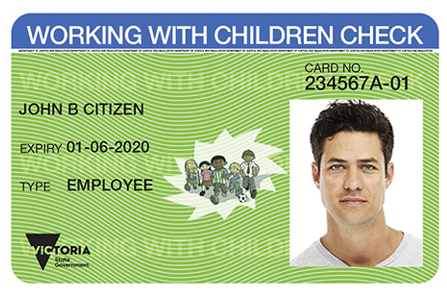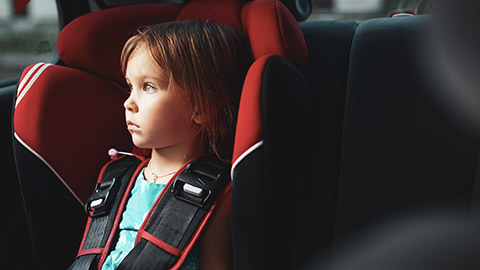In this topic, we explore the health and safety requirements of taking children on excursions. Looking at how to safely plan an excursion using effective risk assessments.
By the end of this topic, you will understand:
- The legal requirements for taking children to venues outside of the facility
- Completing a risk assessment for transport and excursions
- Conducting safe excursions and outings.
Excursions can be an invaluable learning experience for children, but they also pose a different set of risks. In an environment that is not as controlled as an ECEC service, these risks can also be less predictable and more difficult to control and manage. Planning and risk assessment is key to the safety of any excursion, as well as being part of the legal responsibility of educators.
Here are the steps involved in planning a safe excursion:
- Complete an excursion risk assessment of the venue, route and activities.
- Develop an excursion plan to minimise any identified risks.
- Confirm policy and legislative requirements for insurance, volunteer credentials and transport requirements.
- Allocate adequate staffing to ensure a good level of supervision will be maintained at all times.
- Communicate the excursion details to families and obtain written permission for the child to attend.
Educators will also prepare the children for the excursion using intentional teaching techniques to help them understand the safety procedures that will be used on the excursion. This includes actively providing opportunities for children to collaborate on planning the excursion and generating ideas for possible problem-solving. This can be done through play and purposeful interactions in small groups. Educators can demonstrate and model actions and behaviours that are desired on the excursion, including acting safely and responding to possible emergency events.
Resource
Division 6 of the National Regulations outlines the requirements for risk assessments and authorisation requirements for excursions.
Insurances and Working with Children Checks
By law, your service must be run with appropriate insurance, including public liability and other insurance covering events, incidents and accidents outside the service, such as during excursions. Before the excursion, check the validity and scope of the insurance cover. Make sure the cover does not have inclusions that might affect the activities planned excursion, such as water play or travelling across a state border if your service is close to a border. Your service must be able to provide evidence of this insurance if asked by an auditor.
In most states and territories, the law requires that all educators, staff members and volunteers (including family members) present a current Working with Children Check (WWCC).
Before the excursion, an approved supervisor must view the WWCCs and record the identifying number of the WWCCs presented for each person accompanying the children on the excursion, along with the date and by whom it was sighted.
A sample working with children card from Victoria6:

Conducting a Risk Assessment
A thorough risk assessment must be completed before an excursion. If it is a regular outing, the risk assessment should only be done once every 12 months. Still, it must be reviewed regularly and newly completed if there is a change to the practical details of the excursion at that time.
An excursion risk assessment should include a hazard inspection using a checklist of the buildings, outdoor areas and transportation mode that will be used. It should also identify the risks relating to the activities occurring during the excursion and determine how they will be reduced and monitored.
Example
An excursion risk assessment includes considering:
- how long will the excursion take?
- which supplies such as food, drink and medications should be taken?
- existence of water hazards such as pools or dams
- hazards relating to vehicles such as buses or cars used to transport the children, including seatbelt requirements; getting on and off buses or trains
- hazards that might lead to children becoming lost
- the requirements for adult-to-child supervision ratios and whether adults with special skills such as swimming or life-saving qualifications are required for that particular excursion
- where adults fluent in a language other than English might need to be present to help with safety instructions to children.
Working with Others During Excursions

Excursions in early childhood will require additional adults to supervise the children. When early childhood professionals take children on excursions, there are several techniques they should use to ensure everyone involved can provide adequate support to minimise risks to children. During the excursion, all adults should remain vigilant at all times, keeping a close eye on the children in their care. They should also follow any safety procedures that have been put in place for the activity.
Techniques for interactions between others to minimise risks to children while on excursions are underpinned by effective communication skills. This means being able to clearly explain the plan for the day to the other adults involved, as well as being able to actively listen to their queries or concerns. Educators will use open and closed questions to confirm that others have heard and understood shared information. The risk management plan should be shared with the parents/carers of the children attending the excursion and with the staff accompanying the children.
Sharing information with all adults involved in the excursion is crucial. This information includes access to the risk management plan, as well as:
- identified lists of which children the adult is responsible for
- support plans for children with medical or care needs and plans in case of any accidents
- methods to notify of an incident or accident
- emergency contact details
- the location of the first aid kit
- agreed emergency assembly points.
Excursion Risk Assessment
A template for undertaking an excursion risk assessment is available on the ACECQA website. Use the template to identify and assess risks to the safety, health or well-being of children attending the excursion and specify how these risks will be managed and minimised [regulation 101(1)]. This must include any risks associated with water-based activities.
Gaining Permission for Excursions From Parents/Guardians or Carers
There are strict rules governing the required permissions to take children outside your service for any reason, including excursions. According to the National Regulations, there must be written permission from the child’s parent or guardian, and strict penalties apply if this has not been completed.
Permission forms must include:
- child’s name
- date of the excursion
- time the child or children will be away from your service
- reason for the excursion and details about the destination venue/s
- methods of transport to the venue and how safety requirements such as vehicle restraints will be provided
- activities that are proposed during the excursion
- number of children attending, and the ratio of educators and adult volunteers to children
- providing details of the risk assessment to parents/guardians.
The form must be named and signed by the parent or guardian named in up-to-date enrolment records and returned to the service.
Case Study
Liliane’s service is proposing a trip to the Children’s Museum. Here is the permission slip that was sent to all parents/guardians.
2 July
Dear Parents and Guardians,
As you may be aware, the four-year-old group at Little.ly ECEC have been learning about dinosaurs this term. To help with their education and enjoyment of this topic, we have planned an excursion to the ‘Land of the Dinosaurs’ exhibit at Lindon Children’s Museum.
The excursion will take place on 14 July 2021, and children, educators and volunteers will travel via charted bus.
The bus will leave Little.ly ECEC at 12 midday and return at 2:30 p.m., in time for pick-up. The bus is equipped with seat belts that meet Australian Safety Standards.
The trip will take approximately 15 minutes each way. Children will spend 1.5 hrs of supervised time looking at and engaging with the interactive exhibits. We will have a packed lunch together outside in a sheltered area, weather permitting, and then will be given a short amount of time to play on the museum play equipment before departing for the ECEC.
We expect approximately 15 children to attend, and four educators and four volunteers will supervise at all times.
Please provide your child with a hat, clothing appropriate for a change in weather and a healthy packed lunch.
A risk assessment of the venue, transport and activities has been completed, and this can be sighted by asking one of the educators to provide it to you in hard or soft copy.
Please feel free to contact us if you have any questions or concerns.
Please provide the following to consent to your child attending the excursion, and return to us on or before 10 July.
Child’s Name:
Name of Parent or Guardian:
Signature of parent or guardian:
Date:
Conducting the Excursion Safely
Supervision in the uncontrolled environment of an excursion venue must be vigilant and strict. Children should be given clear instructions about what to do if they become separated from the group, such as asking a worker at the excursion venue to contact staff. Instructions to hold hands and walk with a partner in a line should be encouraged and monitored.
Note
Ratios of adults to children for particular types of excursions—such as visits to venues with bodies of water, including pools, water parks and farms—need to be increased to match the risk assessment results.
Case Study
All children on the excursion to the Children’s Museum are provided with clear instructions and simple rules to follow. They are each given a piece of paper with the mobile phone number of the educators present on the excursion and asked to keep this in their pocket.
Liliane and the other educators pack a trolley bag for the excursion. The bag contains:
- A list of emergency contact numbers for children on the excursion
- A first-aid kit
- Health plans and any required medication, including EpiPens, packed and labelled for individual children
- Spare changes of clothes, spare hats and cardigans
- An attendance record which provides for a record that accounts for all children at different points of the excursion
- A checklist to ensure that each educator has a mobile phone, along with the contact numbers of each adult.
Liliane and the other educators carefully count the children at each departure and arrival point, including when they disembark and re-embark on the bus and when they leave the exhibit and the playground.
Practice
An Excursion Risk Assessment and Permission Form
Imagine that you have been asked to help plan a walk to the local library around the corner from the ECEC for 12 preschool-aged children. The children will walk the route of the block and will not be crossing any roads. The walk will take place at 4 p.m. The children will be asked to dress up in a book week costume.
- Using this example, complete the excursion risk assessment, inventing any other details you might need to add. Your risk assessment should consider:
- The National Regulations relating to excursions, including staff ratios
- There are as many hazards as you might reasonably encounter during this excursion.
- Once you have completed the risk assessment, develop a permission form to be provided to parents/guardians.
Make sure you keep the developed permission form for your future reference, as this information will support your assessment and professional practice.

Children sometimes need to be transported for reasons other than excursions. A transport risk assessment must be completed for any transport arranged by the service.
Regular transportation for the same child, where the circumstances are the same each time, needs to have a risk assessment completed at least once every 12 months. The requirements for a risk assessment and gaining permission are similar to those of an excursion risk assessment and permission form. It must also include a description of the proposed pick-up location and destination and an assessment of risks related to the mode of transport, route to be taken, supervision ratio and safety regulations.
Resource
Division 7 of the National Regulations outlines the requirements for transportation of children other than as part of an excursion.
See also this ACECQA Information sheet – Safe transport for children.
Planning Transportation
While completing the risk assessment, you must be able to show evidence that you have considered the following factors:
- The risks posed by the type of transport, such as public buses that do not have seatbelts, gaps between a train and platforms, and the height between the ground and a large vehicle.
- Whether restraints such as child booster seats or car seats are required, and how they will be checked.
- The number of educators or other responsible adults that are required to provide supervision and whether any adults with specialised skills, such as medical skills, or languages other than English, are required.
- The items that will need to be taken with the transport, such as a mobile phone and a list of emergency contact numbers for the children attending.
- How will the child/ren leave and re-enter the service and the destination safely and with supervision?
- How will each child be accounted for before and after the transport?
Authorisations for Transport
A parent or guardian must authorise the child to be transported by your service or on transportation arranged by the service. If the transportation is regular, the authorisation needs only be obtained annually.
The parent/guardian and the service must agree in writing, with the parent/guardian being given the following information:
- the child’s name
- the reason the child is to be transported
- if the authorisation is for regular transportation, a description of when the transport will occur
- if the authorisation is not for regular transportation, the date the child will be transported
- a description of the proposed pick-up location and destination
- the means of transport, such as car, bus or train
- the period during which the child is to be transported
- the anticipated number of children likely to be taken on the transport
- the anticipated number of staff members and any other adults who will accompany and supervise the children during the transportation
- any requirements for seatbelts or safety restraints
- that a risk assessment has been prepared and is available at the education and care service
- that written policies and procedures for transporting children are available at the education and care service.
Resource
ACECQA provides a template on their website that can be used by services to help them complete the requirements for transportation risk assessments: Risk Assessment Template: Transporting Children (Other Than as Part of an Excursion).
Practice
A Transport Risk Assessment
Imagine now that the excursion you have planned in Activity 5A has met with a problem from the local library. It has been deemed too small to accommodate the children. It has been decided that the excursion will now occur to a larger library in a neighbouring suburb. This change will involve transporting children using cars.
Go to the ACECQA website and download the Risk Assessment Template: Transporting Children.
- Complete a transport risk assessment for this task.
